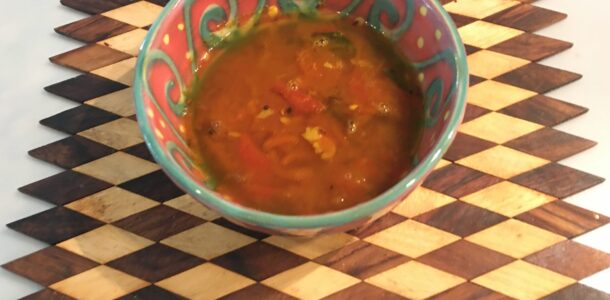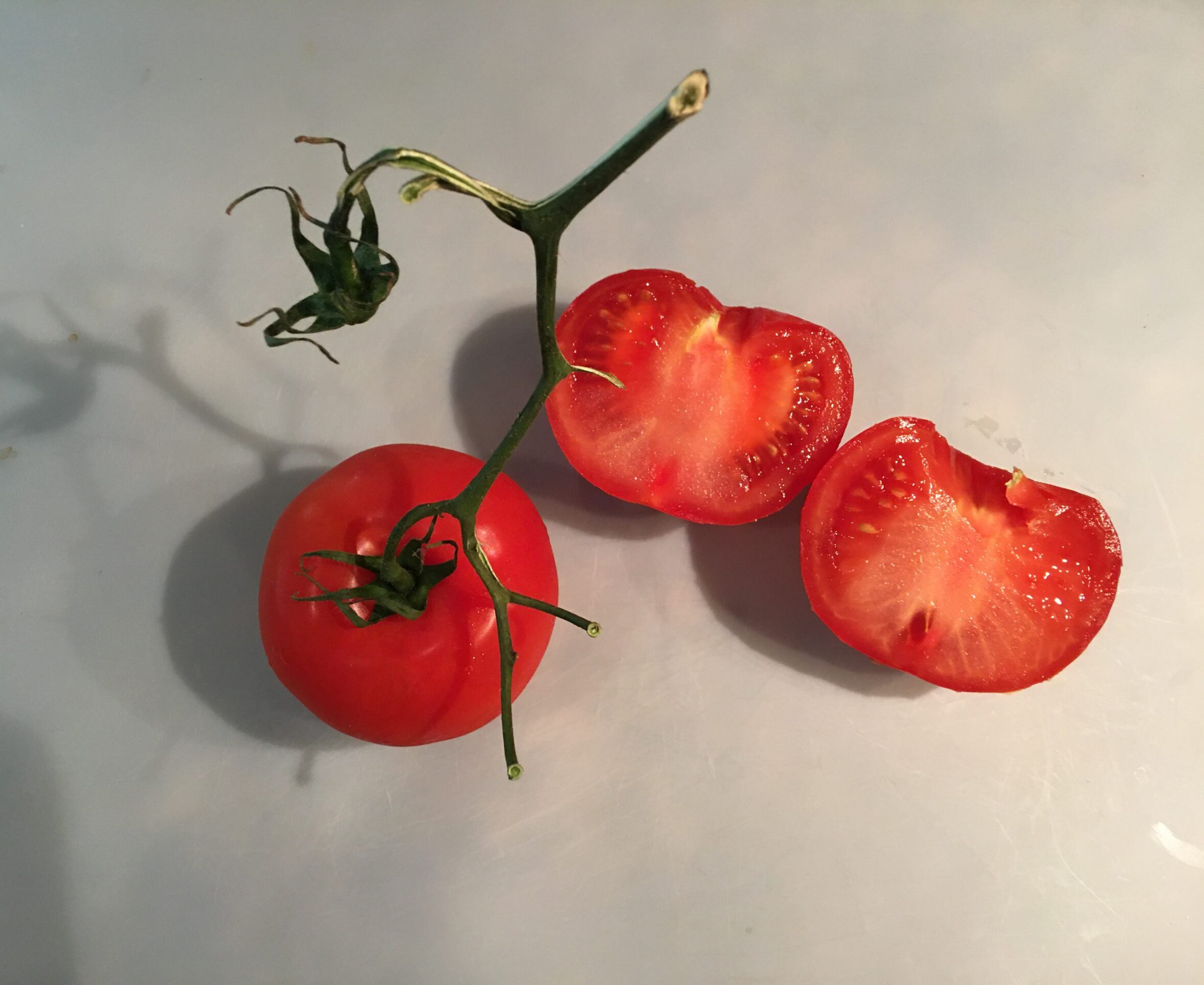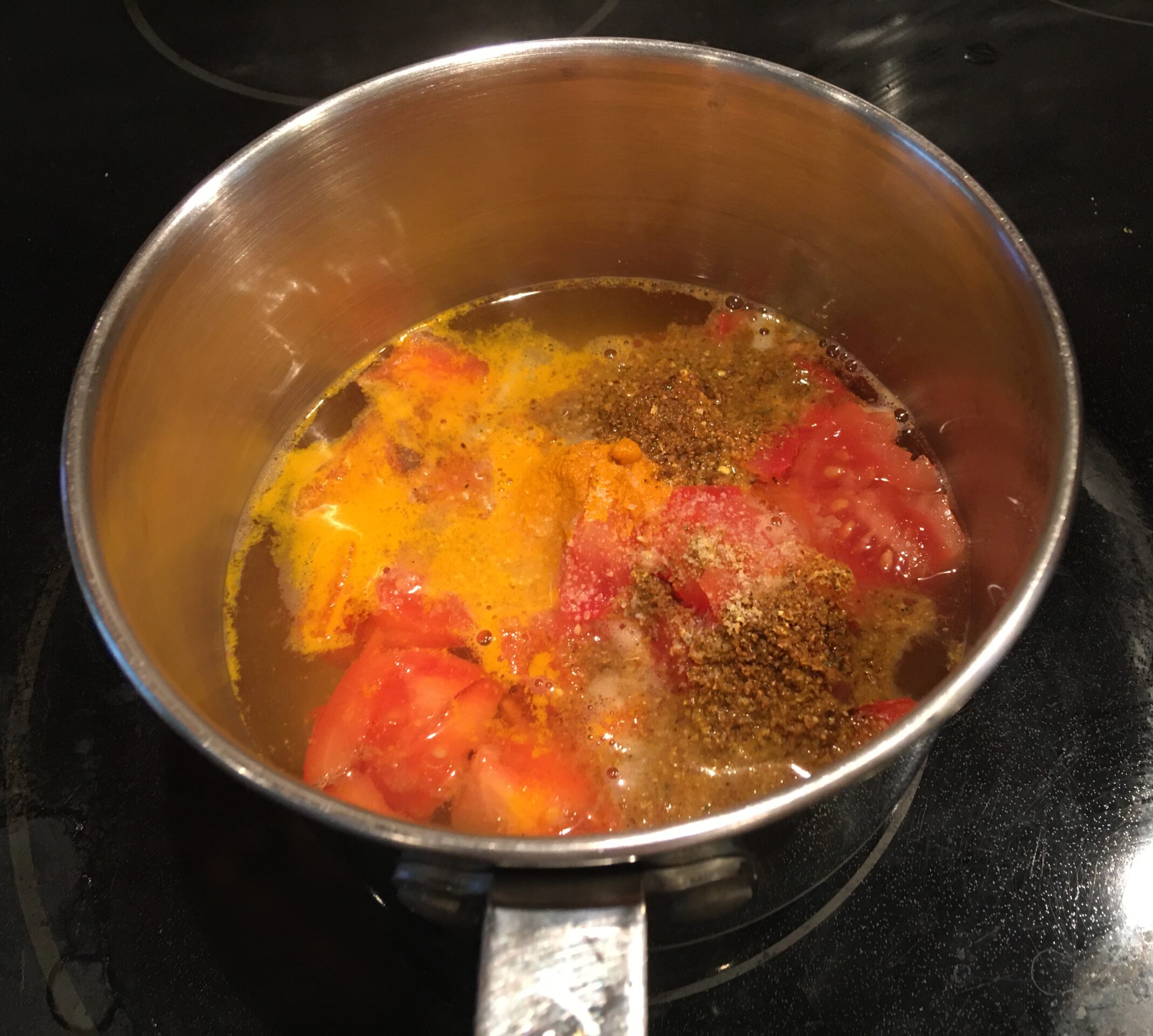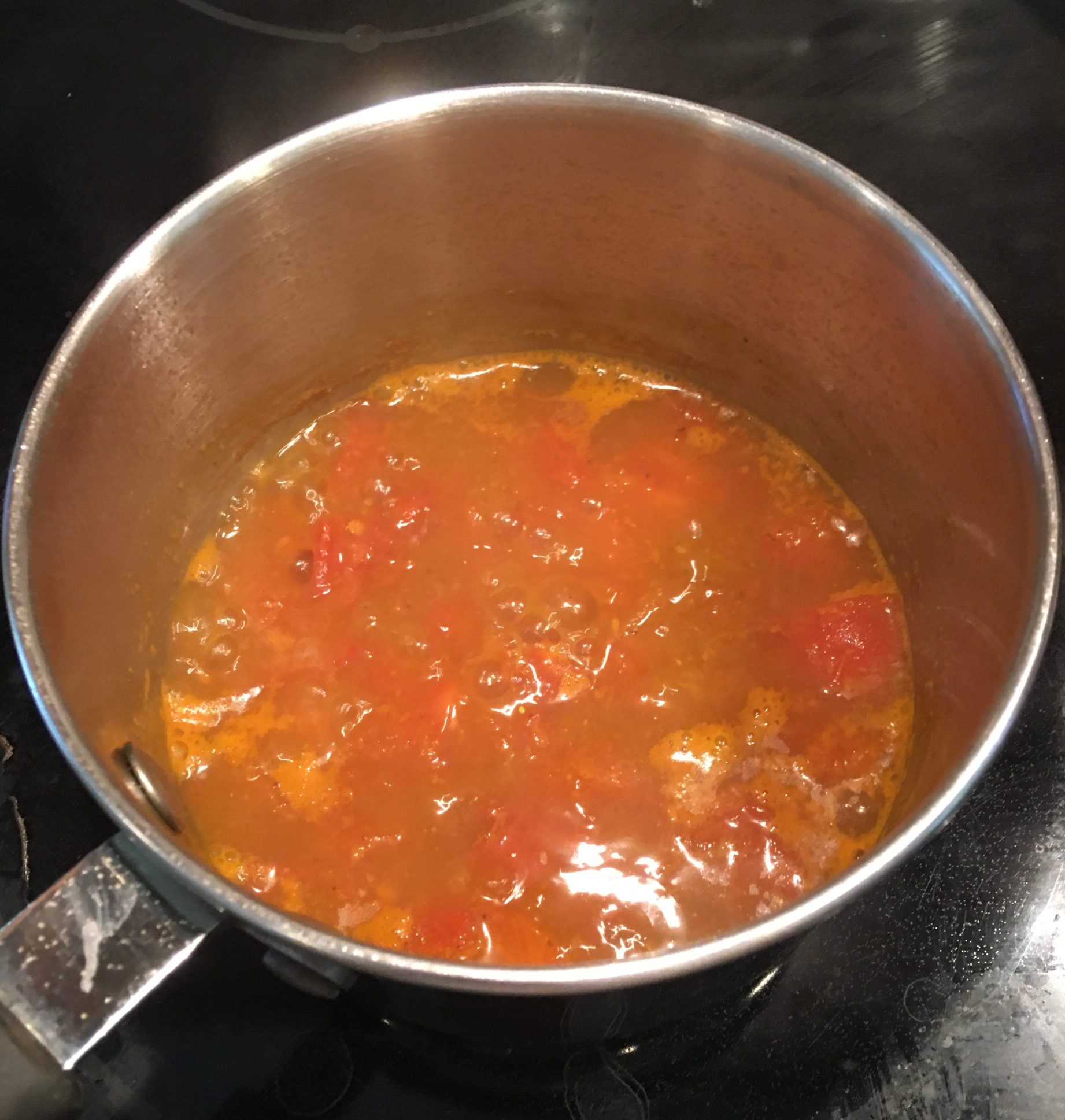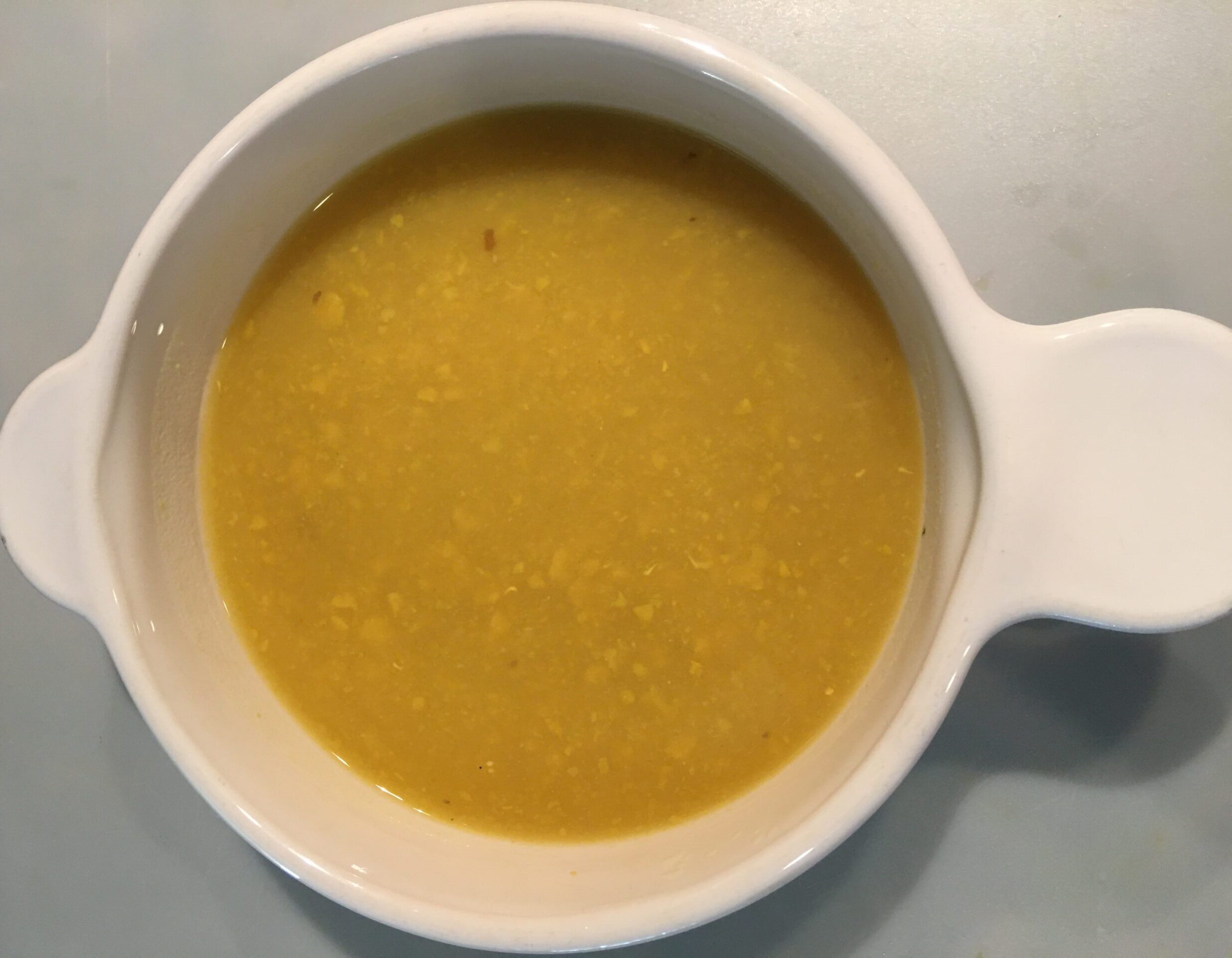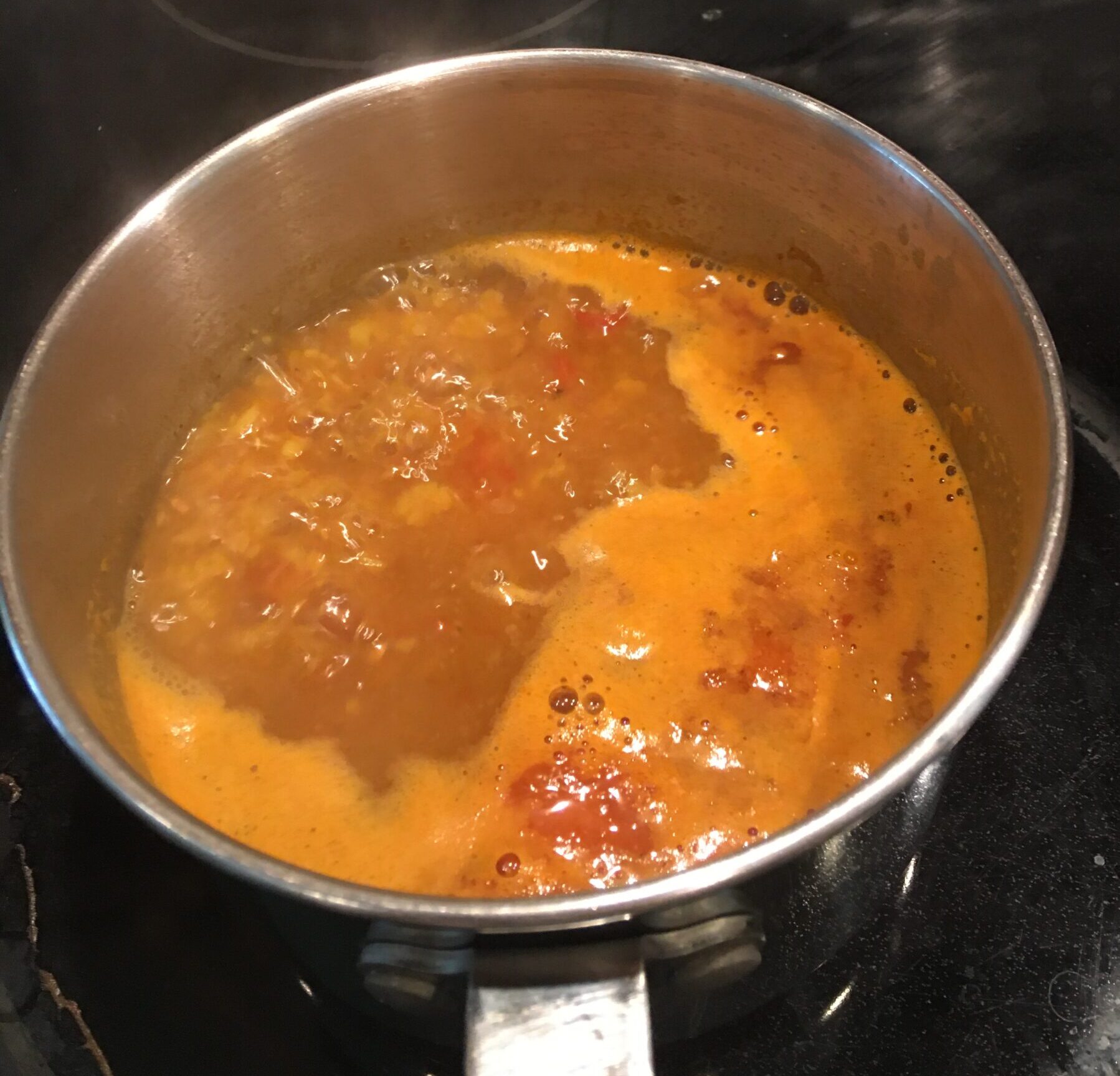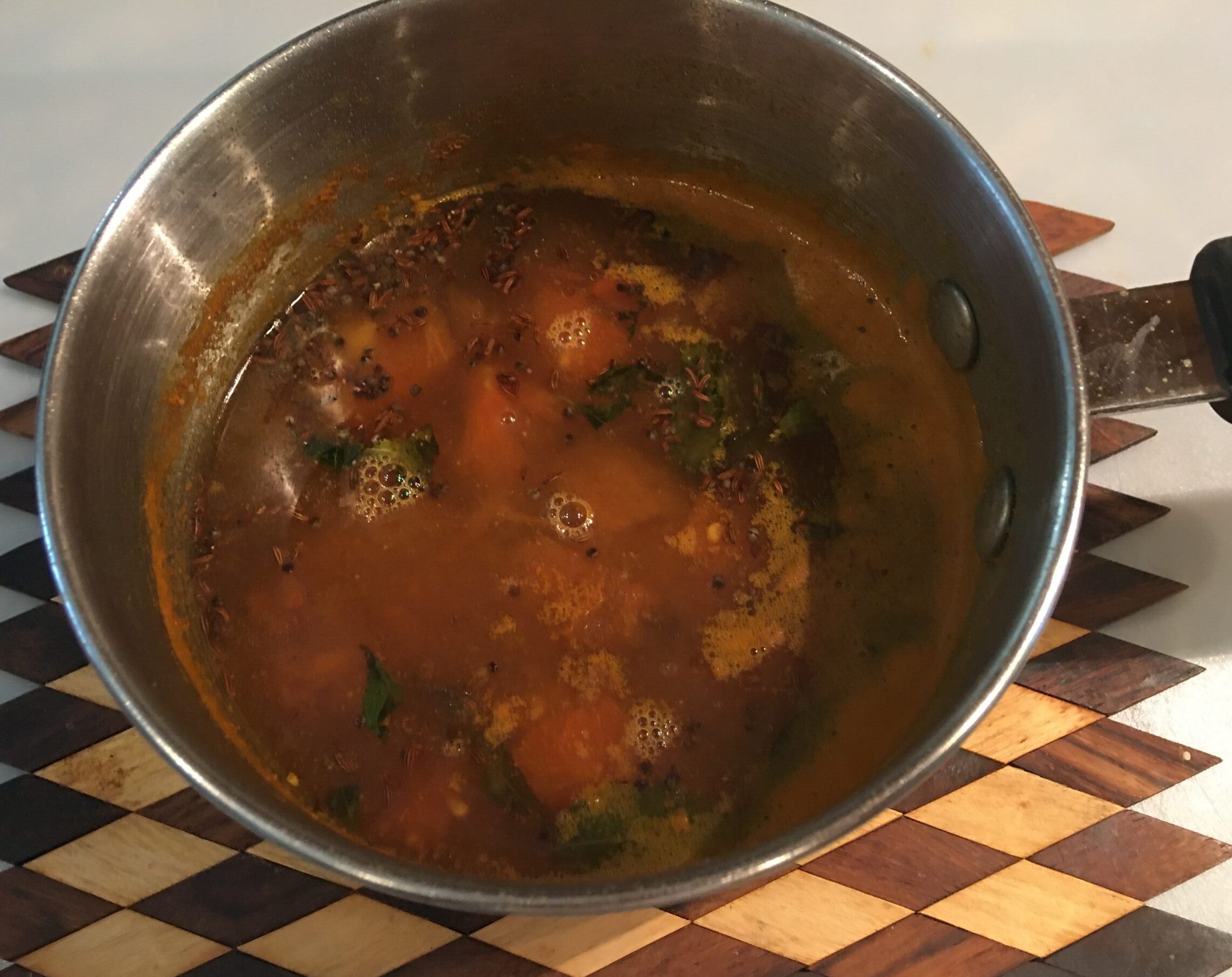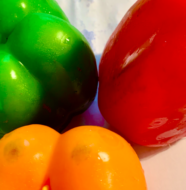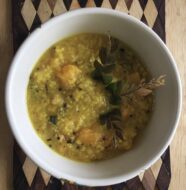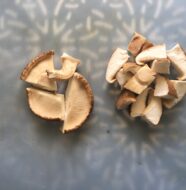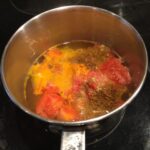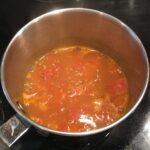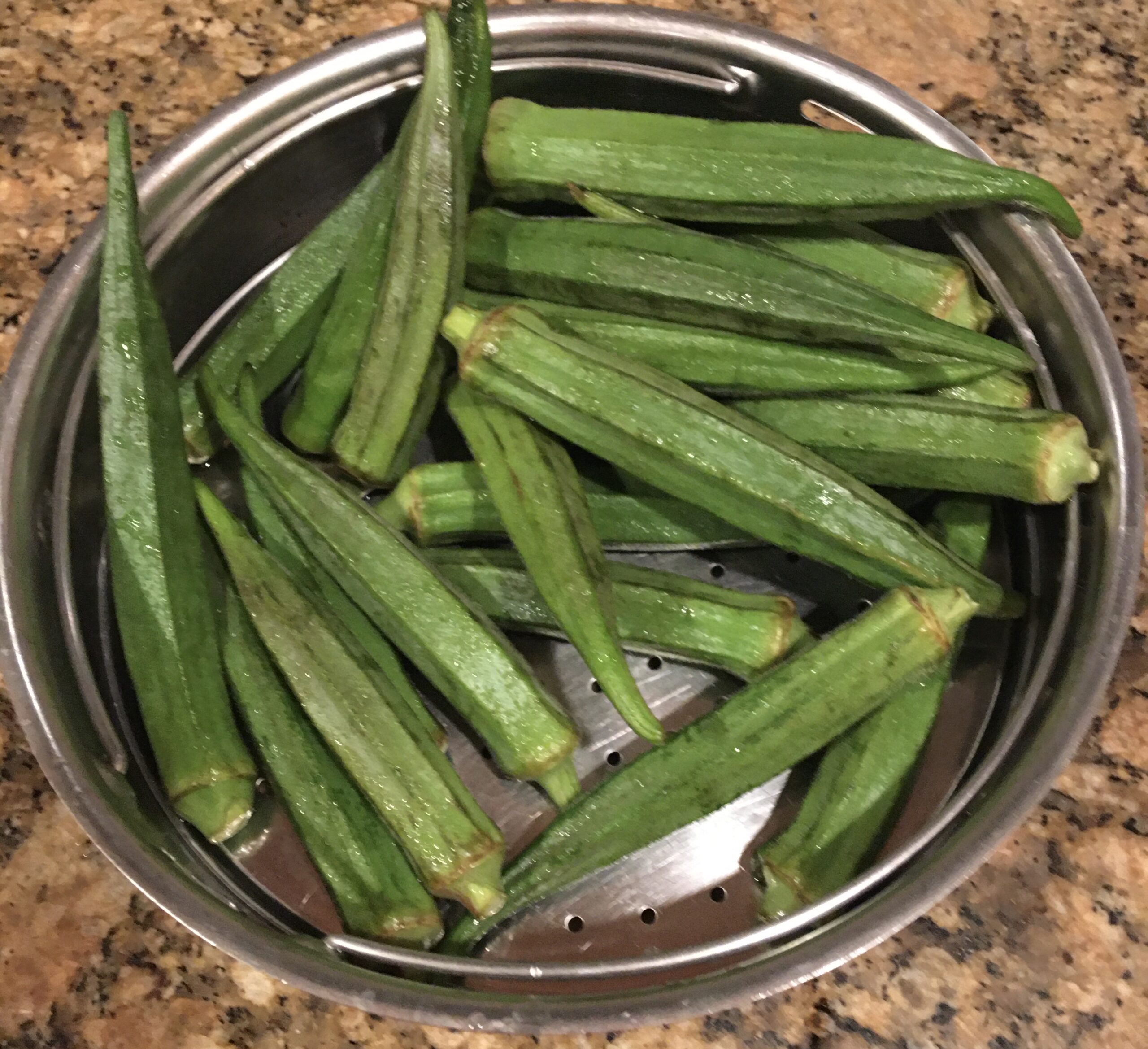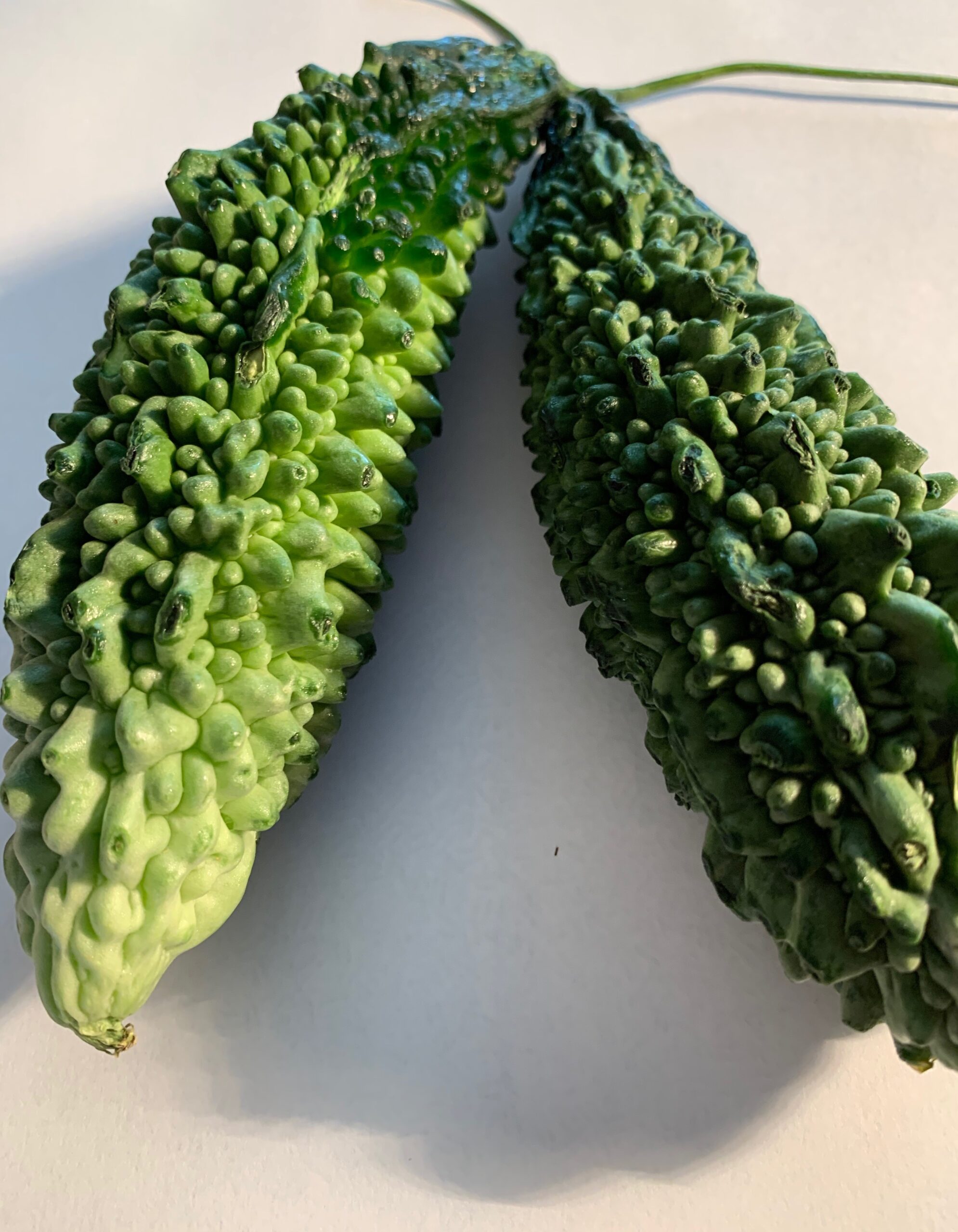Rasam, a clear soup made with lentils plus water along with tamarind or lemon to give sourness, is a welcome treat to the senses of taste and smell. The vegetables added usually are tomatoes, but orange slices or pineapple pieces added to the lentil base produce unique tastes. Lentils are packed with protein and fiber. Eaten with grains they form a complete protein though lacking in a few amino acids. Rasam is served as the second course of a meal at any feast (4-course meal – 1st rice served with Sambhar & vegetables; 2nd rice with Rasam & Papadam; 3rd rice with milk – sweet Payasam; 4th rice w. yogurt & pickle). Rasam is best eaten with Papadam (lentil cracker). Both pigeon pea or mung lentils can be used to make Rasam. Varieties of Rasam are also made like Jeera & black pepper Rasam to relieve cold or Garlic- Mint Rasam on a rainy day.
History of Rasam : Renowned food author and historian Acharya in his book ” a historical dictionary of Indian food ” defines rasam as follows. Rasa in Sanskrit means “Extract.” Rasam in Tamil Nadu is a thin extract of split pigeon pea lentils (Tuvar dal) or mung lentils spiced in different ways. pepper, tamarind, lemon, garlic, etc. The British colonials adopted the pepper rasam as Mulligatawny soup. in the military canteens during their rule.
Nutrition Facts of Pigeon Pea (Cajanus cajun) Lentils 100 g. %DV
| Energy.. 343kcal (17%) | Sodium (Na)17 mg (1%) | Folates …456 mcg ( 114 %) |
| Carb. ..62.8g (48%) | Potassium( K )1392 mg (30%) | Niacin.. .2.96 mg (18.5 %) |
| Protein ..21.7g (39%) | Calcium (Ca )mg 05 (13%) | Pyridoxine .0.28mg (22%) |
| Fiber.. 15g (39%) | Copper (Cu) mcg 1.06 (117 %) | Riboflavin 0.19 (14 %) |
| Total Fat 1.5 g (7.5%) | Iron (Fe) mg 5.2 (65 %) | Thiamin 0.64 mg (54%) |
| Cholesterol 0mg (0%) | Magnesium (Mg) mg183 (46%) | Pantothenic acid 28.6% |
| Selenium (Se) mcg 8.2 (15%) | Manganese (Mn) mg 1.8 (78%) | Vitamin C mg 0 (0%) |
| Zinc (Zn) mg 7 (25%) | Phosphorous (P) mg 367 (52%) | Vitamin A IU 5 (0%) |
Health Benefits of Rasam
- Rasam prevents constipation: Tamarind in rasam is a magical elixir that is packed with fiber that adds bulk to the stool to enable smoother regularity.
- Rasam facilitates digestion: Black pepper in the soup helps the secretion of acids that aid digestion and prevent the formation of gas and flatulence.
- Rasam is rich in antioxidants: that prevent free radical activity. antioxidants in tamarind keep the skin young and healthy. The vitamin C in tomatoes enhances skin health.
- Rasam helps in weight loss. : The black pepper in rasam may rev up the metabolism; a faster metabolism ensures that you don’t put on extra weight.
- Rasam is a powerhouse of vitamins and nutrients: It is an excellent recovery food. Patients down with flu or other illness can load up on rasam for an easy inflow of vitamins and nutrients.
Spice & Herb Powers
- Turmeric powder: Curcumin may help mitigate the risk of chronic diseases like cancer and Alzheimer’s. According to a Journal of Medicinal Food study turmeric can reduce plaque build-up in the arteries which can otherwise lead to atherosclerosis or heart disease.
- Rasam powder prevents cancer: Piperine present in the pepper has inhibitory effects on cancerous cells. Curcumin in turmeric may lower the risk of chronic diseases like dementia.
- Asafetida powder may lower blood pressure levels by being a natural blood thinner.
- mustard seeds mitigate migraines. Mustard seeds are known to give relief from the number of migraine attacks you can get.
- Cumin seeds promote digestion by increasing the activity of digestive enzymes.to speed up digestion. It also helps increase the release of bile from the liver which helps digest fat and nutrients in the gut.
- Cilantro leaves act as a natural preservative due to their high antioxidant contents. A compound “dodecanal” found in the leaves has been found to have antibacterial effects against salmonella.
Method to cook Rasam
- Rinse and cook lentils in a sauce pan with turmeric & 2 cups water on stove.(20 min.)
- Alternately cook lentils in a pressure cooker. (15 min.)
- Puree split pigeon pea lentils when cool. (2 min.)
- While the lentils cook, cut tomatoes in quarters.(2 min.)
- Dissolve tamarind paste in 1 cup water or extract pulp from tamarind.
- Add tomatoes and rasam spices.
- Cook soup in the microwave or boil on the stove. (8 min.)
- Dilute pureed lentils with 2 more cups of water; add to tamarind sauce.
- Continue to heat until rasam boils and froths; remove from heat. (4 min.)
- *Sizzling of mustard seeds (Porichu kottal)
- Heat oil/ghee to medium-hot in a frying pan;
- Add mustard & cumin seeds; cover with lid.
- When they splutter pour on rasam soup. (sizzling sound) (2 min.)
- Garnish with washed and chopped cilantro or curry leaves.
- Lemon Rasam
- Cook split mung lentils on the stove or in a pressure cooker.
- Boil tomatoes with water and rasam spices. (8 min.)
- Dilute cooked mung lentils with 2 cups water.
- Add to rasam soup and bring to a boil and simmer (4 min.)
- Remove from heat and follow mustard sizzle.
- Garnish with lemon juice and cilantro leaves.
- Pineapple or Orange rasam
- Simmer pineapples or oranges in diluted lentil water with rasam spices. (5 min.)
- Season with mustard seeds* as shown above, and garnish with herbs.
Serve Tomato rasam with Quinoa, Brown Rice, Rice noodles, or as a soup to drink.
TIPS
For a clear soup pour only the lentil water after it has settled (decantation)
Timesaver: pre-cook lentils and save in the refrigerator/freezer
Timesaver Use canned or freshly cut pineapples or oranges
To make Ghee ( clarified butter) melt 1 stick of butter in a saucepan for 3-5 min. until the bubbles stop and it is frothing on top (also available at an Indian store)
references

